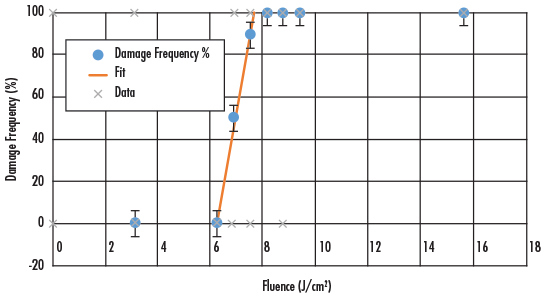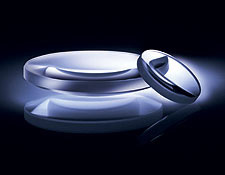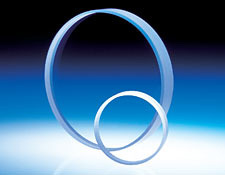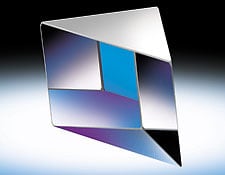High Laser Damage AR Coatings
Laser Damage Threshold (LDT), also known as Laser Induced Damage Threshold (LIDT), is one of the most important specifications to consider when integrating an optical component into a laser application. The type of damage induced to an optical component by a laser beam is dependent on its wavelength, pulse length, polarization, repetition rate, and spatial characteristics, among other factors. The failure mechanism of the optic is related to either the substrate or coating. The table below lists the most common variables that affect LIDT:

| Variables that Affect LDT/LIDT | ||
| Laser | Substrate | Coating |
| Output Power | Material | Deposited Material |
| Pulse Duration | Surface Quality | Deposition Process |
| Pulse Repetition Rate | Cleanliness | Pre-Coating Preparation and Cleaning |
| Beam Profile | Reactivity to the Environment | Lot-to-Lot Control |
| Beam Diameter $ \left( \frac{1}{\text{e}^2} \right) $ | Material Absorption | Coating Design and Optimization |
| Wavelength | Material Homogeneity | Protective Layers |
Edmund Optics® specifies many of its AR Coated TECHSPEC® optical lenses with either a Laser Damage Threshold or a Typical Energy Density Limit.
Lenses designated with a Laser Damage Threshold have been designed, and guaranteed, to withstand a certain level of laser fluence. Extreme care is ensured throughout substrate preparation, cleaning processes, material choices, coating design and deposition processes, and packaging to ensure the lenses will not be damaged by the specified laser parameters. All processes have been meticulously documented and lenses manufactured with those processes have been rigorously tested by independent testing houses via the ISO-21254 procedures and methods.
Lenses designated with a Typical Energy Density Limit are coated with an anti-reflection (AR) coating that has been shown to withstand the specified laser parameters. The lens substrates are manufactured according to Edmund Optics’ world-class manufacturing processes and standards, but have not been specifically designed to withstand high-energy lasers.
Whether a lens has a guaranteed laser damage threshold or a typical energy density limit, the ultimate performance of the lens is highly dependent upon the environment in which it is used. To maximize the lifetime and performance of your lens, visit our website for application notes on proper handling, cleaning, and storage of laser optics.
















or view regional numbers
QUOTE TOOL
enter stock numbers to begin
Copyright 2023 | Edmund Optics, Ltd Unit 1, Opus Avenue, Nether Poppleton, York, YO26 6BL, UK
California Consumer Privacy Act (CCPA): Do Not Sell or Share My Personal Information
California Transparency in Supply Chains Act